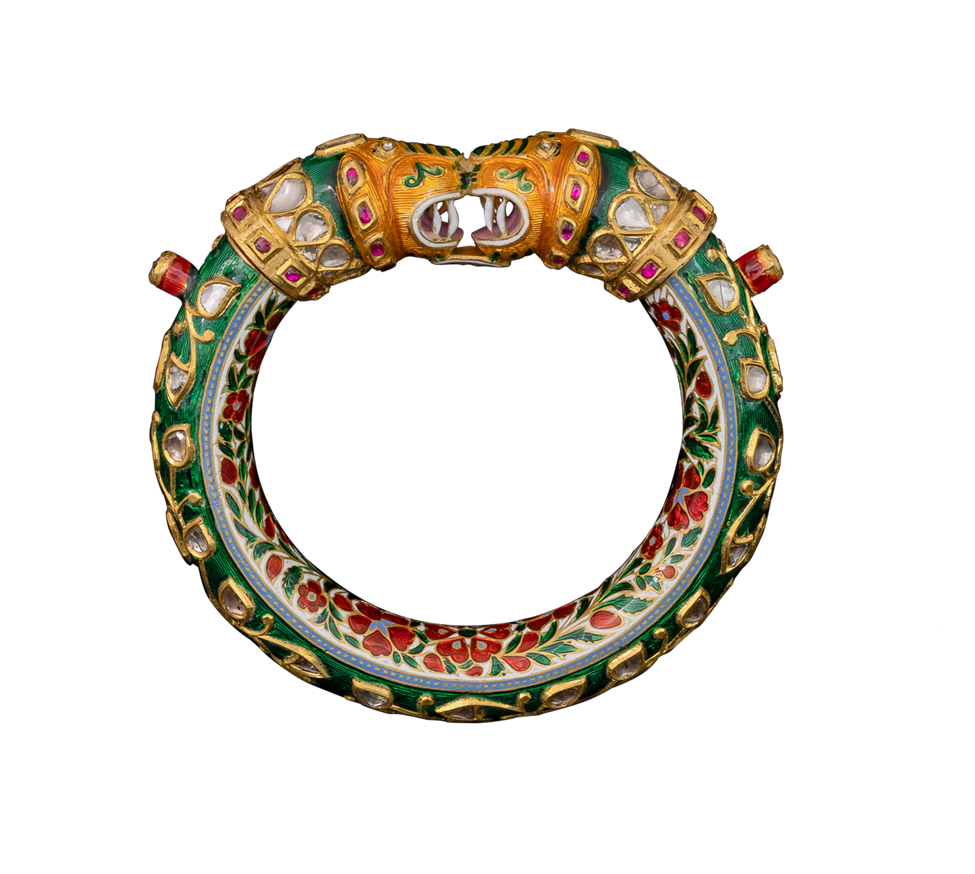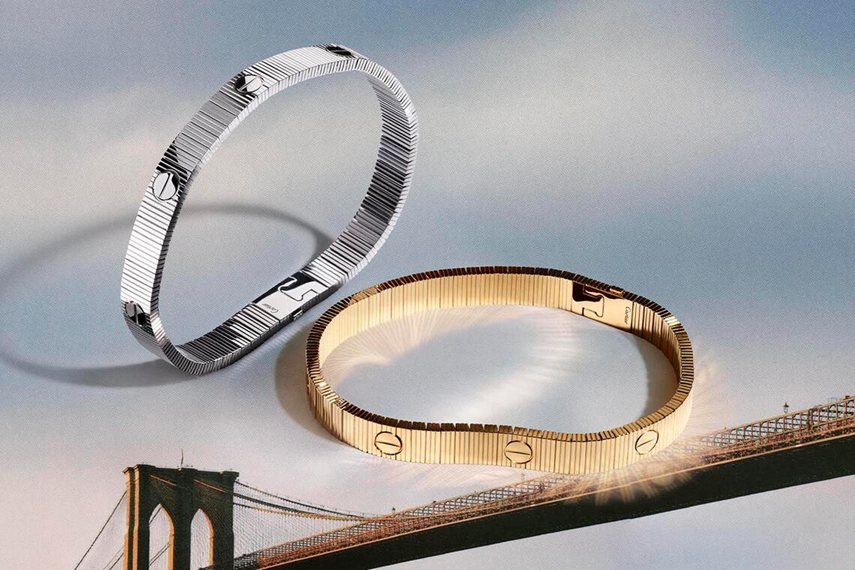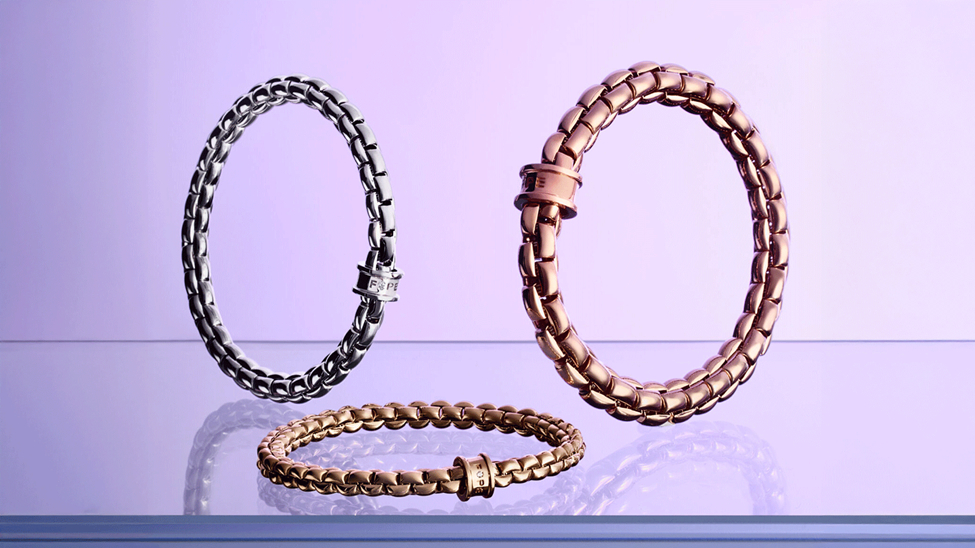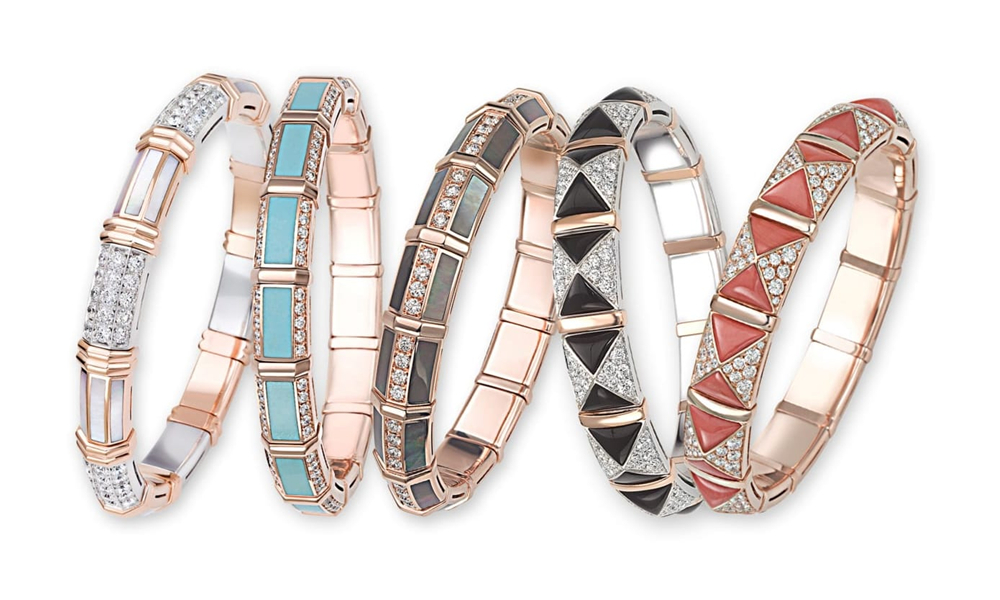Through centuries and civilisations, the bracelet has long been a popular adornment, worn closest to the pulse, exhibiting craftsmanship, identity, and belief. From Indian kadas to bangles and broad bracelets, this versatile piece has seen countless interpretations through the years.
Shilpa Dhamija explores the bracelet’s evolution to highlight how ingenuity and technical expertise have overcome inherent design constraints to enhance both wearability and aesthetic appeal.
The bracelet’s ‘industrial’ moment was seen in the 19th-20th Century. Screw-fasteners became commonly used in kadas. Traditionally, these kadas, with their thick cylindrical tubes, were designed with large uncut diamonds and gemstones. They were heavy, inflexible, and crafted to fit a fixed wrist size. A simple twist of the screw transformed the rigid kada, letting it open and embrace wrists of varied sizes. “These were hand-made screws. In some instances, a pushpin was also used,” informs Sudhir Kasliwal, Director, Gem Palace, Jaipur. A subtle addition, the screw-fastening closure transformed the kada’s wearability.

Around the same time in Europe, French jeweller Auguste Lion is documented to have pioneered tubogas style jewellery; spiral pieces similar in nature to the future Bvlgari tubogas bracelet. He used the tubular form of gas pipes (tubo-gas) to bring both form and mechanical flexibility to his designs. Lion also won awards at the 1867 and 1878 World Fairs in Paris for using industrial techniques in objects made with precious metals. It is to be noted that Bvlgari made the first Serpenti bracelet, using a tubogas mechanism much later, in the 1940s.
After the Second World War (1939-1945), influences of industrial aesthetics and utility became notable in precious jewellery. Shortage of platinum, which was requisitioned for military use, prompted jewellers to work with just yellow gold. Traditional goldsmithing and jewellery designs were reimagined to match the modern and bold post-World war era. In 1948, Bvlgari introduced the Serpenti bracelet-watch, employing the tubogas technique to weave and mould strips of gold into flexible wearable art. Devoid of gems and stones, these pieces demonstrated a novel sophistication; fluid movement became the backbone of the design. Subsequent experiments added enamelling, intaglio and mixed-colour gold to extend the vocabulary of the form. In the course of time, Bvlgari Serpenti became an icon for its industrial manifestation.
Another emblematic design inspired by industrial aesthetics is Cartier’s Love Bracelet. Italian jewellery designer Aldo Cipullo created it in 1969 for Cartier, making the bracelet’s fastening screws a signature element of its design language. Notably, before incorporating utility screws on a jewellery bracelet, Cartier had first used them on the face of the Santos-de-Cartier watch in the early 20th century.

The Love Bracelet, fastened with miniature screws and a screwdriver, was designed to be secured by two persons. Cartier turned a simple industrial mechanism into a symbol of commitment and togetherness. Despite its slightly cumbersome closure process, the bracelet’s popularity only grew, only because of clever storytelling. Over the years, Cartier applied several alterations to its hero product: changed fastening methods, made the bracelet slimmer, or paved it with diamonds.
In its recent rendition, released in October 2025, the love bracelet has evolved into the Love Unlimited bracelet, a flexible chain crafted in 18-karat rose, yellow, and white gold. A new clasp mechanism allows it to be worn with a single hand.
The bracelet’s modernisation blended comfort with design innovation in the 20th and 21st century. The millennium era has seen some remarkable evolution in bracelet designs that have challenged norms, ushering in innovation to enhance both elegance and wearability.
In 2016, Picchiotti, an Italian jewellery brand, introduced its patented Xpandable jewellery collection. Addressing the common issue of fluctuating finger, knuckle and wrist sizes in women, Picchiotti’s founders dedicated three years to researching and developing a discreet, internal, hidden, durable spring mechanism that allows bracelets to expand a little like elastic and slip smoothly onto the wrist, eliminating the need for cumbersome clasps, while offering effortless wear. The collection offers a diverse range of styles, from classic diamond tennis bracelets and satin-finish gold to various cuts of precious and opaque gemstones.

Fope, another jewellery brand from Vicenza, Italy, introduced the Flex’it bracelet in 2007, which achieves elasticity through microscopic 18-karat gold springs. Its design also features Fope’s innovative Novecento mesh, a soft, flexible weave created by hooking the components of the precious metal together without soldering. Flex’it is a patented system for producing jewellery that is entirely and uniquely flexible, comfortable, and easy to wear.

